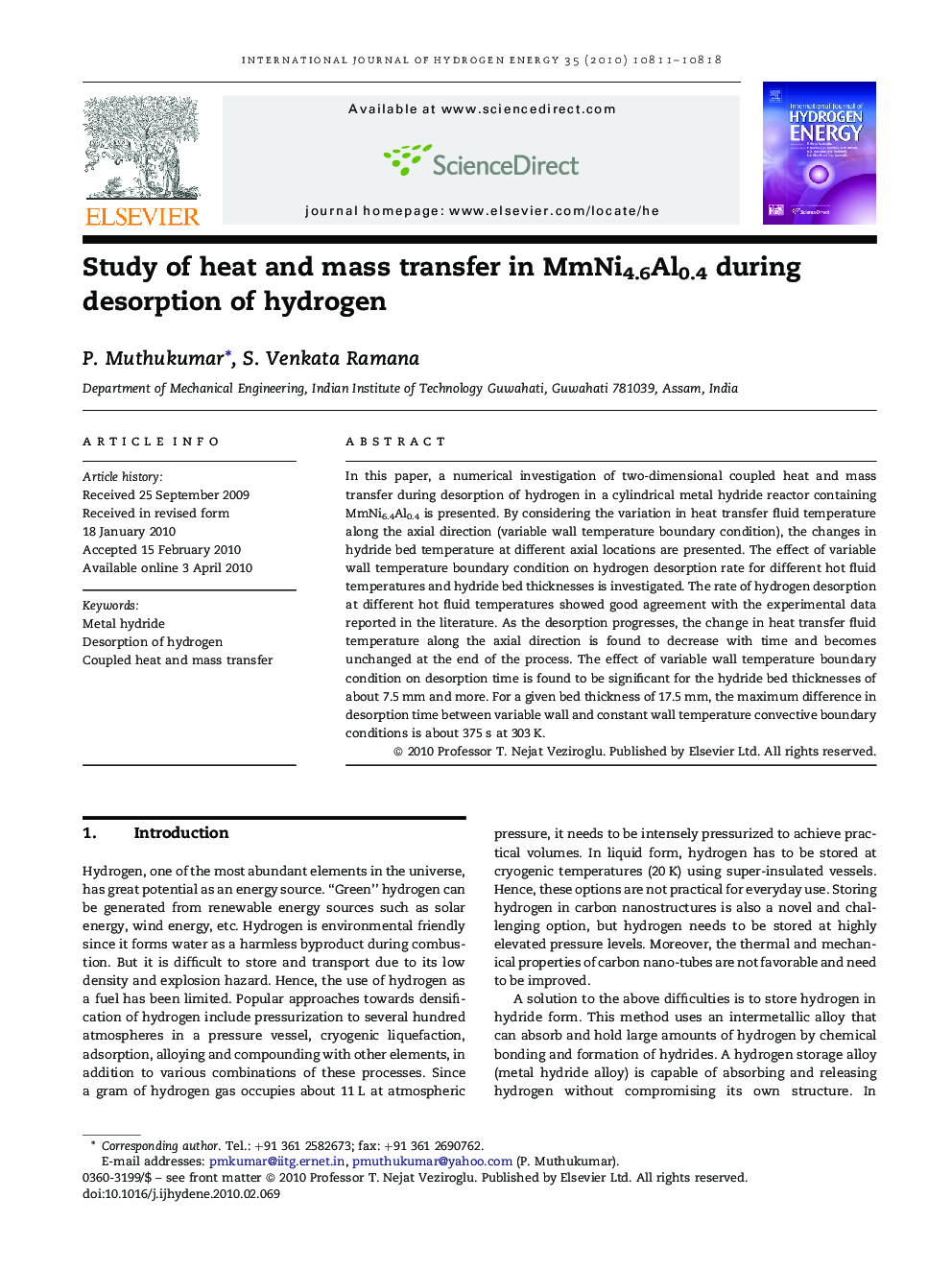| Article ID | Journal | Published Year | Pages | File Type |
|---|---|---|---|---|
| 1280152 | International Journal of Hydrogen Energy | 2010 | 8 Pages |
In this paper, a numerical investigation of two-dimensional coupled heat and mass transfer during desorption of hydrogen in a cylindrical metal hydride reactor containing MmNi6.4Al0.4 is presented. By considering the variation in heat transfer fluid temperature along the axial direction (variable wall temperature boundary condition), the changes in hydride bed temperature at different axial locations are presented. The effect of variable wall temperature boundary condition on hydrogen desorption rate for different hot fluid temperatures and hydride bed thicknesses is investigated. The rate of hydrogen desorption at different hot fluid temperatures showed good agreement with the experimental data reported in the literature. As the desorption progresses, the change in heat transfer fluid temperature along the axial direction is found to decrease with time and becomes unchanged at the end of the process. The effect of variable wall temperature boundary condition on desorption time is found to be significant for the hydride bed thicknesses of about 7.5 mm and more. For a given bed thickness of 17.5 mm, the maximum difference in desorption time between variable wall and constant wall temperature convective boundary conditions is about 375 s at 303 K.
